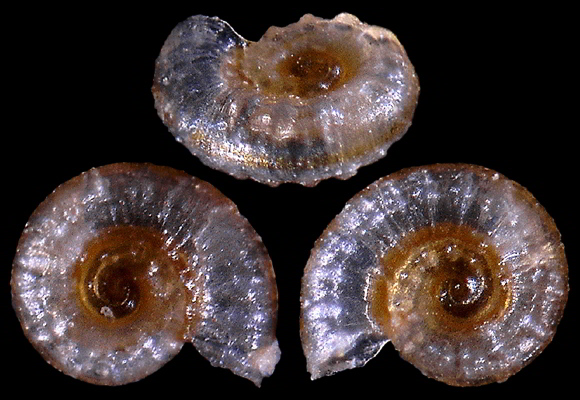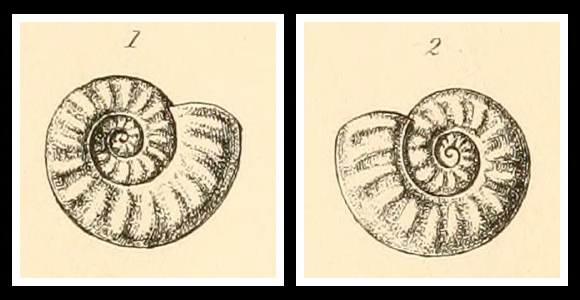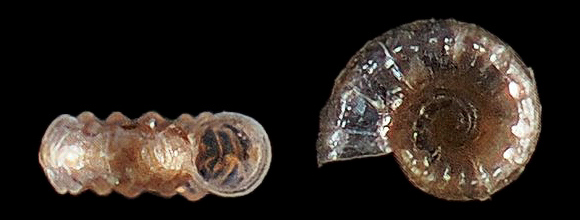
Original taxon: Skenea rota. Synonyms: pulchella, rotata…
Micrograzer in the infralittoral. « A miniature Ammonite conveys the best idea of this beautiful but most minute shell. It is discoid, flattened on both sides, but scarcely sunken in the middle, and of a somewhat pearly semi-transparent white, or very pale wax-colour. Both the upper and lower disks are adorned by numerous abruptly projecting rounded ribs, that dilate as they radiate from the well-marked sutural line, but do not quite extend to the edge of the volutions, and are separated by intervals of nearly equal size, that are either smooth or else present a single elevated radiating line; just before the termination of the ribs an obscure spiral groove occasionally runs between them, but does not traverse the ribs themselves. » – Forbes & Hanley, 1850: A history of British Mollusca and their shells vol. III, London 1850, p.160.
7m deep, in shellgrit from cave, La Azohia, west of Cartagena, Murcia, S. Spain. 0,5mm.

« There are only two whorls and a half, that are convex, well-defined, and slowly enlarge from a smooth and tolerably large apex. The body is not regularly rounded, but seems, possibly from the lesser convexity of the periphery, a little subangulated both above and below. The aperture, which is raised above the level of the upper disk, is small, and nearly circular, as the penult whorl projects but slightly into it. The size is less than half a line. The animal when dried (for it was not examined in a living state), is of a wax-colour. This rare species has been taken in Donegal by Mr. Warren and by Mr. Barlee. » – Ibid.
The species in Forbes & Hanley, vol. IV, plate LXXXVIII.

– (CC BY-NC-SA) –